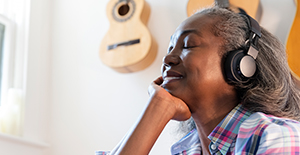Have you been wondering how to safely use a public restroom during the Coronovirus pandemic? You aren't alone! Check out these helpful tips to stay safe:
- Go before you go. Most older adults can't go hours and hours without going to the bathroom, as bladder muscles tend to weaken with age. What's more, the older you are, the more likely you are to have issues such as urinary incontinence or prostate problems, says Rosanne Leipzig, M.D., professor and vice-chair of education for the Brookdale Department of Geriatrics and Palliative Medicine at the Icahn School of Medicine at Mount Sinai Hospital in New York City. If you think the answer is to hold back on fluids, don't: Older adults are particularly vulnerable to the effects of dehydration, Leipzig notes. Take all your necessary medications, too, including ones that can have diuretic effects, like blood pressure meds. What you can do? Avoid coffee and other caffeinated drinks, which can make you urinate more because they are diuretics. Also, when you go to the bathroom before you leave your house, practice double voiding: This means after you go to the bathroom, wait 20 to 30 seconds, and then try again to fully empty your bladder.
- Wear a mask. Keep it on even in a seemingly empty bathroom, and wear it in the stall. It's also important to make sure the bathroom is well ventilated — you can usually tell if you hear a fan. Research shows that well-vented restroom air moves quickly so that any aerosol droplets won't persist for very long.
- Spritz the stall before you enter. Philip Tierno, a clinical professor of microbiology and pathology at NYU Langone Health, recommends spraying the air in a stall, as well as the toilet seat, with a disinfectant that contains ethyl alcohol and dimethyl benzyl ammonium saccharinate, such as Lysol, and waiting up to a few minutes, ideally, before entering. “We know that the COVID-19 virus can remain suspending in the air as microdroplets for several hours,” he explains. “The spray will bring down the virus particulates that do remain in the air, so you're less likely to breathe them in.”
- Prepare to flush and rush. The problem of toilet plume can easily be dealt with by putting the lid down to flush, but public restroom lids often can't be lowered. In these cases, be prepared to exit as soon as you flush, says Tierno. Don't bother fiddling with paper toilet seat covers, either: It's not likely that they offer any additional protection.
- Double up with hand sanitizer. Even after you lather up and wash your hands after using the loo, it's a good idea to use some hand sanitizer as well. Make sure to reapply it if you've touched any high-touch surfaces, such as doorknobs, faucets, or wastebaskets, as well.
- Skip the hand dryer. A 2018 study published in Applied and Environmental Microbiology suggests that hot-air hand dryers could potentially be germ bombs, shooting out loads of viruses and bacteria from bathroom air directly onto your hands. Opt for a disposable paper towel instead, suggests Tierno.
- Don't putter around on the potty. Almost 75 percent of Americans admit to using their cell phone while on the toilet. But while you're in a public restroom, just skip it. “You really want to limit your time in the bathroom right now and just use it for what it's intended for,” says Leipzig.












































































